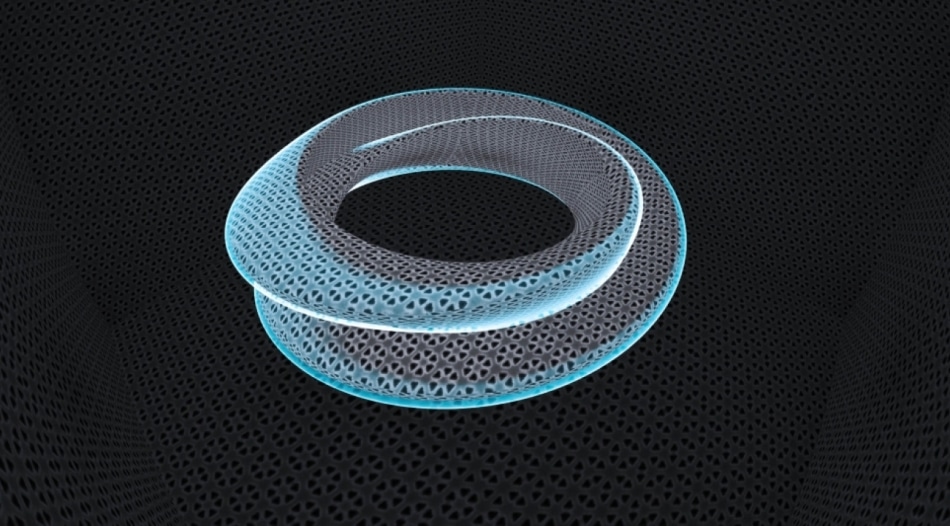Feb 16 2018
Optical highways for light play a vital role in modern communications. However, reliable transmission of individual blips of light known as photons is not so common. At present, a research team from the Joint Quantum Institute (JQI), headed by JQI Fellows Mohammad Hafezi and Edo Waks, has developed a photonic chip with the potential to generate as well as single guide photons.
The device, which has been reported in the Science journal on February 9, 2018, presents a way for the quantum light to move uninterrupted, without the impact of specific hindrances.
 Image credit: JQI
Image credit: JQI
“This design incorporates well-known ideas that protect the flow of current in certain electrical devices,” stated Hafezi. “Here, we create an analogous environment for photons, one that protects the integrity of quantum light, even in the presence of certain defects.”
The basic component of the chip is a photonic crystal, an accepted, adaptable technology adopted to form roadways for light. They are created by forming holes through a sheet of semiconductor material. In the case of photons, the repeated pattern of holes seems more like a real crystal formed of an atomic grid. Scientists adopt varying patterns of holes to modify the manner in which light bends and rebounds through the crystal. For example, they can alter the sizes of the holes and their separations to form limited lanes of travel that enable light of specific colors to pass through, while blocking others.
At times, defects are seen even in such cautiously fabricated devices, which change the intended path of light, diverting it into an unanticipated direction. However, in contrast to eliminating each defect in their chips, the JQI researchers overcome this difficulty by rearranging hole shapes and crystal pattern of the crystal. In the ensuing chip, they form thousands of triangular holes in an array, resembling a honeycomb. They shift the spacing of the holes around the device’s center, forming a distinctive type of travel lane for the light. Earlier, the team speculated that photons traveling through the line of rearranged holes should be unaffected by specific flaws due to the overall crystal structure, that is, topology. Regardless of the fact that the lane is a straight shot or a switchback road, the path of the light from the starting point to the destination has to be ensured, notwithstanding the details of the route.
The light is emitted from small flecks of semiconductor, or quantum emitters, integrated into the photonic crystal. Scientists can use lasers to induce this material to emit single photons. Each of the emitters can acquire energy by assimilating laser photons and lose energy by individually emitting out those photons later. Photons emitted from the two highly energetic states of a single emitter are of distinctive colors and rotate in opposing directions. In the case of this experiment, the researchers used photons from an emitter located around the center of the chip.
The researchers investigated the potentials of the chip by initially modifying a quantum emitter from its lowest energy state to one among the two higher energy states. When the emitter was relaxed back, the emitter emitted a photon into the surrounding travel lane. They repeated this process several times by using photons from both the higher energy states. They noticed that the photons emitted from both the states chose to travel in opposing directions, indicating the underlying crystal topology.
To assure that the design can provide protected routes for single photons, the researchers formed a 60° turn in the hole pattern. In regular photonic crystals that lack intrinsic protective attributes, such a defect would probably make a specific portion of light to be reflected backward or scattered in a different direction. The topology of the new chip protected the photons and enabled them to continue to travel on their path without any impact.
“On the internet, information moves around in packets of light containing many photons, and losing a few doesn’t hurt you too much,” stated Sabyasachi Barik, co-author of the study, who is a graduate student at JQI. “In quantum information processing, we need to protect each individual photon and make sure it doesn’t get lost along the way. Our work can alleviate some forms of loss, even when the device is not completely perfect.”
According to Waks, the new chip has a flexible design that can enable scientists to systematically construct pathways for single photons. “Such a modular approach may lead to new types of optical devices and enable tailored interactions between quantum light emitters or other kinds of matter.”